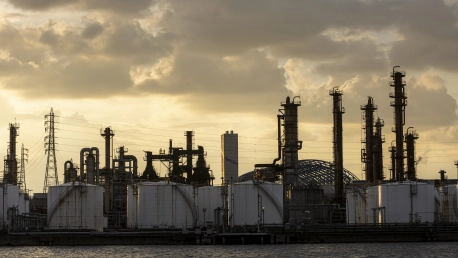The landscape of the global oil market is constantly evolving, and at the heart of this evolution lies the strategic decisions made by the Organization of the Petroleum Exporting Countries and its allies (OPEC+). The International Energy Agency’s (IEA) Oil Market Report for May 2024 points to a market that is sensitive to a complex interplay of factors, making the production policies of OPEC+ more influential than ever. As the industry anticipates shifts in demand and supply, the direction OPEC+ chooses will have significant repercussions for the industry’s balance in 2024 and beyond.
Adjusted Global Oil Demand Projections
The IEA report cautions stakeholders to brace for subdued growth in global oil demand, with a specific emphasis on weakened demand that significantly impacts European markets. Economic headwinds and the drive toward the electrification of transport put additional pressure on the oil industry. This dip in expected demand is a reflection of a broader move away from fossil fuels on the continent and could potentially signal a trend across other OECD economies.Moreover, global trends such as energy diversification and efficiency measures are also key in tempering oil demand. As manufacturers and consumers alike adopt renewable energy sources with increasing enthusiasm, the landscape of demand is expected to experience only marginal growth. These indicators require oil market participants to re-evaluate their approaches amid evolving demand scenarios which could impact pricing and production strategies in the years ahead.
Dissecting the Supply Side Expansion
The report projects a surge in global oil supply, primarily attributed to non-OPEC+ production increases. This presents a conundrum in the market as supply-side expansion could potentially outweigh the relatively modest rises in demand. We see non-OPEC+ nations such as the United States, Brazil, and Canada stepping up output, a trend carrying potentially weighty consequences for market stability and oil prices.On the other side, OPEC+ plays a considerable role in the market’s supply dynamics through its production cuts. These cuts are pivotal in maintaining the delicate balance of the global oil market. As non-OPEC+ producers ramp up their output, compliance and the potential relaxation of voluntary production curtailments within the OPEC+ bloc become critical for understanding the future of global supply and maintaining market equilibrium.
Refining Margins and Inventory Trends
The refining sector is witnessing tightened margins, correlated with declining demand for middle distillates. This scenario leads to significant implications for both operational refinery strategies and global oil throughput. As the markets grapple with these shifts, the resultant effect on oil pricing and corporate profitability is substantial, dictating the industry’s responsive maneuvers.Furthermore, the OMR highlights the precarious state of OECD inventories, having tumbled to notably low levels. With stockpile fluctuations presenting a real concern for market stability, strategic reserves are increasingly seen as a buffer in managing price and supply risks. Initial data hinting at swelling global stocks may indicate an easing situation, but the market remains vigilant on inventory trends as a barometer for the industry’s health.
Price Volatility Amidst Market Dynamics
Price swings are a constant concern in the oil industry, and the IEA notes a recent dip in Brent crude futures. This decline reflects a mix of decreased geopolitical risks and softening economic optimism. It is essential to consider the factors that have prompted a retrenchment in pricing and to evaluate the consequences it may have on market operations and trade.Investor sentiment and demand fluctuations are heavily intertwined with price trajectories. These, combined with strategic responses from oil producers, such as potential run cuts or increased processing rates, shape both immediate financial outcomes and the strategic planning essential for long-term industry success.
OPEC+ at the Crossroads of Production Policy
As OPEC+ convenes in Vienna, the decisions made on production policies will echo throughout the market. The choices that stem from this summit are poised to determine the direction of global oil markets in 2024. The spotlight is on the group’s efforts to reach and maintain stock levels in line with historical averages, which is essential to reduce market volatility.The summit also sheds light on stockpile movements, characterized by an influx of oil on water and fluctuations in onshore stock levels. This data underlines the pivotal role that inventory management plays in shielding the market from excessive price and supply swings. These policy decisions and their impact will largely shape the oil market’s persona in the near term.
Non-OPEC+ Production and Market Equilibrium
The global oil landscape is in constant flux, significantly influenced by the strategic moves of OPEC+ countries. According to the IEA’s Oil Market Report for May 2024, the market is notably reactive to various interconnected elements, with OPEC+’s production policies gaining unprecedented sway. As the world observes changing demand and supply dynamics, the path that OPEC+ treads will carry substantial effects on the industry’s equilibrium as we look forward into 2024. The decisions made in the near future by this influential group are poised to shape the financial and energetic stability of nations worldwide, framing a critical narrative for the global energy economy. Understanding OPEC+’s response to fluctuating market conditions will be vital for stakeholders looking to navigate the complex terrain of the future oil industry.









